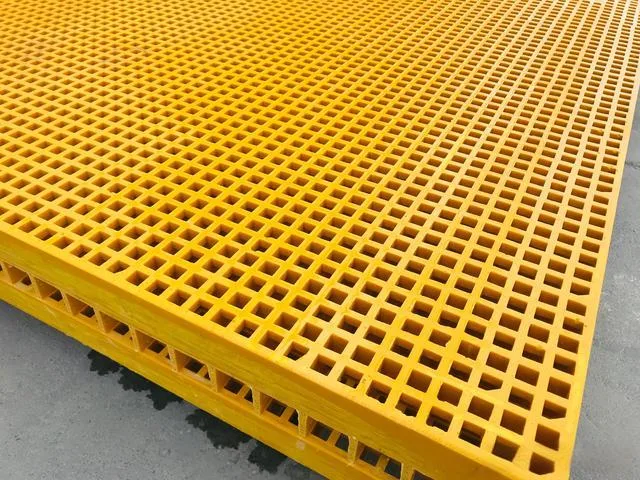Introduction
Choosing the right fiberglass grating supplier can be the difference between a seamless project and one plagued with delays or poor performance. Fiberglass grating is used extensively in industrial and commercial settings, thanks to its durability, corrosion resistance, and safety features. Whether you’re upgrading a factory floor, building a chemical plant walkway, or seeking a low-maintenance solution for an outdoor deck, it’s crucial to partner with a supplier who consistently delivers high-quality products and reliable service. In this article, we’ll walk you through the key considerations and practical tips for selecting the best fiberglass grating supplier for your specific needs.

fiberglass grating supplier
Understand the Basics
What Is Fiberglass Grating?
Fiberglass grating, often referred to as FRP (Fiber Reinforced Plastic) grating, is a strong yet lightweight composite material. It’s made from a blend of fiberglass strands and a resin matrix, typically polyester or vinyl ester. This construction offers several benefits over traditional metal grating, including corrosion resistance and longevity.
- Corrosion Resistance: Ideal for harsh or corrosive environments where metal grating might rust or wear out quickly.
- Lightweight Design: Easier and safer to handle and install compared to steel.
- Non-Conductive: An excellent choice for electrical and high-voltage applications.
Key Benefits of Fiberglass Grating
When choosing fiberglass grating, you’ll benefit from:
- Reduced Maintenance Costs: Fiberglass doesn’t need regular painting or rust prevention.
- Superior Safety: Textured or slip-resistant surfaces help reduce workplace accidents.
- Long-Term Durability: Fiberglass grating typically lasts longer than metal grating in harsh chemical or marine environments.
These advantages make fiberglass grating a solid long-term investment for many industries, from petrochemical to water treatment plants.
Key Factors to Evaluate in a Fiberglass Grating Supplier
Quality Assurance
The first step in finding a reliable fiberglass grating supplier is to examine their quality assurance practices.
Manufacturing Processes
A trustworthy supplier should use proven manufacturing methods—like the pultrusion or molded grating processes—that meet or exceed industry standards. Ask about the types of resin they use (polyester, vinyl ester, phenolic) and whether they can provide material certifications.
Material Standards
Many industries adhere to strict specifications. For instance, the Occupational Safety and Health Administration (OSHA) outlines guidelines for slip resistance in industrial walkways. Ensure your chosen supplier meets or surpasses these standards. This guarantees the grating will serve its intended purpose safely and effectively.
Industry Experience
Longevity in the industry often translates to expertise and reliability.
Track Record in Various Sectors
Look for a supplier that has worked with clients in your specific sector—be it chemical processing, food and beverage, or marine applications. A supplier experienced in your domain is more likely to anticipate challenges and recommend the right product.
Case Studies or Testimonials
Request case studies or client testimonials to gauge how the supplier handled similar projects. If you see a proven record of on-time delivery and customer satisfaction, you’ll have greater confidence in the partnership.
Product Range
A comprehensive product range indicates a supplier’s versatility and ability to meet varied needs.
Types of Fiberglass Grating Available
Different projects call for different grating options. Molded fiberglass grating might be suitable for applications that require maximum corrosion resistance, while pultruded grating may be ideal for high-load areas. Ensure your supplier carries the specific product type you need.
Customization Options
You might need custom panel sizes or specific resin formulations for specialized conditions. A good fiberglass grating supplier will offer solutions that align with your project’s unique requirements.
How to Assess Supplier Credentials
Certifications and Standards
Reputable suppliers often hold ISO certifications for quality management. They may also comply with standards like American Society for Testing and Materials (ASTM) for material testing. If a supplier shows they meet these benchmarks, it’s a strong indication of their reliability.
References and Reviews
Online reviews, LinkedIn recommendations, or direct references from previous clients can shed light on the supplier’s delivery times, customer service quality, and overall performance. Don’t be afraid to ask for references; a trustworthy supplier should be willing to connect you with satisfied customers.
Pricing and Cost Efficiency
Budget Considerations
Before finalizing a supplier, compare quotes from multiple vendors. Remember that the cheapest option might not always be the best in the long run. Saving a few dollars upfront can cost more later if the grating wears out prematurely or fails to meet safety standards.
Balancing Quality and Cost
According to a recent market report by Grand View Research, the global fiberglass market is expected to grow significantly in the next few years, driven by infrastructure and industrial demands. This growth also means more suppliers may enter the market, offering varying levels of quality. Striking the right balance between cost and quality ensures you won’t compromise safety or durability.
Delivery and Customer Support
Lead Times
Reliability is measured not just by product quality but also by how quickly products are delivered. A fiberglass grating supplier with consistent stock and reliable logistics can help you meet construction deadlines, avoiding project delays.
After-Sales Assistance
Support shouldn’t end once the products are delivered. Look for a supplier that offers ongoing technical support, installation guidance, and a clear warranty or return policy. This will help you address any issues promptly, minimizing downtime and additional costs.
Conclusion
Choosing the right fiberglass grating supplier is a critical decision that affects both the safety and efficiency of your operations. By understanding the basics of fiberglass grating, verifying supplier credentials, comparing product ranges, and carefully evaluating cost-effectiveness, you position yourself for a successful, hassle-free experience. Whether you’re a project manager in the chemical industry or a facility operator in a manufacturing plant, the key is due diligence and clear communication.
Call to Action: Now that you know what to look for in a fiberglass grating supplier, share your thoughts in the comments below or reach out with any questions. Don’t forget to subscribe to our newsletter for more insights into industrial materials and supplier best practices. We’d love to hear about your experiences and help you find the perfect grating solution for your next project!




























